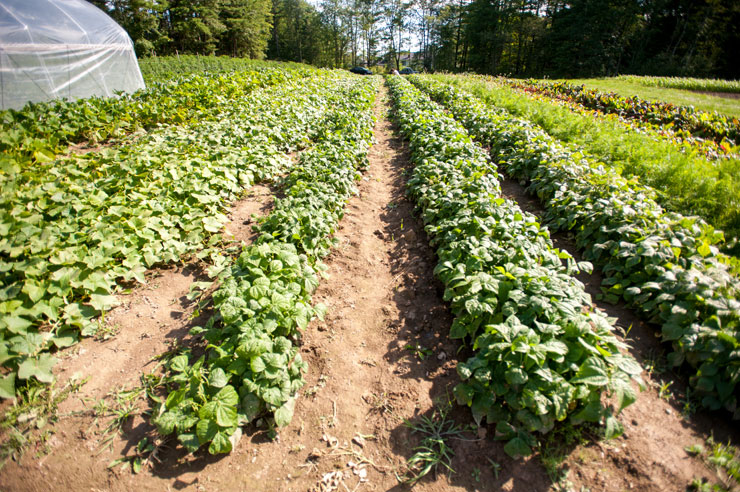
Succession Planting
By Jason Lilley, UMaine Extension Cumberland Sustainable Agriculture Professional
Now that the garden soil is drying out and warming up, it’s time to get planting!
Many gardeners wish that they had more space to get more veggies from. One way to increase your yields without increasing your garden space is with succession planting. Succession planting is the practice of planning the use of your garden space and planting times for continual harvests throughout the season. This ensures that as you finish the harvest of one planting of a certain crop, the next planting is ready to be harvested.
Succession planting:
- Maximizes the use of your garden space
- Ensures a continuous supply of crops and
- Results in higher season long yields
To start planning your succession plantings make a chart for each of your crops of the:
- Days to harvest
- Cold tolerance of the crop and
- Harvest period of the crop
Days to harvest
One way to utilize your days to harvest information for succession planting is to plant different varieties of the same crop that have different days to harvest. For example if you plant a sweet corn variety that is 68 days to harvest at the same time as an 80 day variety, you would almost have finished harvesting the 68 day variety in the ≈12 days before the 80 day variety is ready to start harvesting.
Days to harvest information also gives you helpful information about when to put in your last planting. Remember that as the days get shorter and cooler in the fall, you will need more time for your crop to mature than the stated days to harvest.
Cold Tolerance
Be aware of the heat and cold tolerance of your crops. Cool season crops like radishes, lettuces, peas, and spinach do best in cooler soils. These crops are best to plant in succession in the early spring and late fall. Some of these crops can be harvest before warm season crops are ready to plant, making room in the garden those crops. Warm season crops like tomatoes, eggplant, melons, and beans are more sensitive to frost and grow more slowly in cooler temperatures. Final succession plantings of these crops should occur earlier to ensure that they can mature before temperatures are too cool.
Harvest Periods
When deciding how long to wait between succession plantings consider the amount of time that you can harvest from a plant or crop. Crops like kale, peas, summer squash, and tomatoes continue to yield over a long period so you may want to wait longer between plantings. Other crops like melons, radishes, and head lettuce are harvested and done, so more frequent planting are be beneficial. Suggested interval times between succession plantings for different crops are listed in this chart by Johnny’s Selected Seeds. Use this succession planting calculator to enter your first planting dates, your desired time between planting, and have your successive planting date calculated for you!
